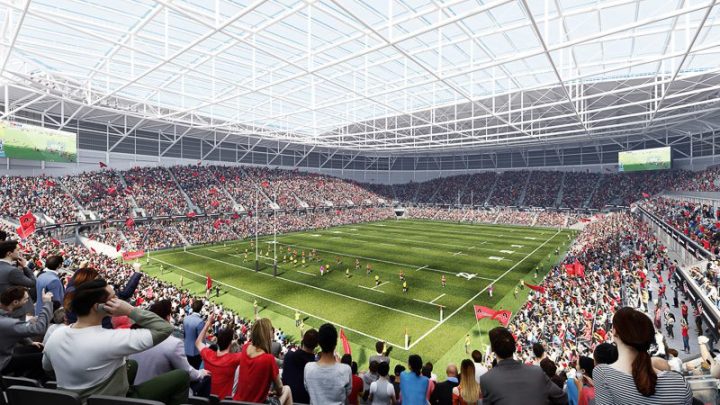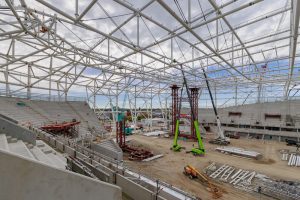
Te Kaha’s countdown is on
Christchurch’s new stadium marked its one-year-to-go milestone with a sneak peek for media in mid-April.
The $683 million project is on track to open in April 2026, four years after construction began in April 2022. Christchurch City Mayor Phil Mauger says the “sky’s the limit” for the positive impact One New Zealand Stadium should have on the city.
Te Kaha Project CEO David Kennedy says it’s been a “mammoth effort to get the project to this point”.
“Lead contractor BESIX Watpac and all our sub-contractors have pulled out all the stops, and we’re in a great position to not only deliver one of the biggest infrastructure projects the country has seen, but to deliver it on budget and on time,” David adds. “A lot of people have had their part to play in making the stadium a reality, and it’s brilliant to be on the countdown to opening,” says Mayor Phil.
The multi-use arena, located in central Christchurch, will cater for 30,000 people for sports matches and up to 37,300 when in concert mode. Both the Crusaders and Matatū will be playing Super Rugby matches at the stadium next season, while the One New Zealand Warriors and Wellington Phoenix have also signed up to play a match each in 2026. As construction continues, grass is growing off-site.
Image impressions released by Christchurch City Council elicit the feeling of what the stadium will come to be.
Mayor Phil, who hopes to retain his position when the opening rolls around, says people can’t wait to get in [the stadium] for big concerts, sports matches, and everything in between. “There’s huge excitement in the community about One New Zealand Stadium at Te Kaha and all the benefits it will bring to Christchurch.”
Parking, and lack thereof, has been raised as a major concern from those eager to experience the new stadium. Mayor Phil hopes to see a system similar to that when the city hosts SailGP, where shuttle buses consistently run to and from the city and venue.
BREAKDOWN OF THE BUILD
2780 people employed
1.7 million work hours
32,700 cubic metres of concrete
16,300 tonnes of steel
122,000 bolts
600km of cabling
5km of air conditioning ducting
22,000 sheets of GIB
11,500 square metres of steel sheeting
1100 panes of glass




